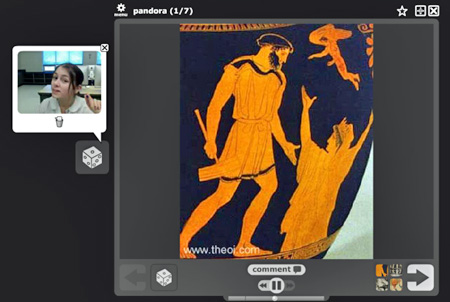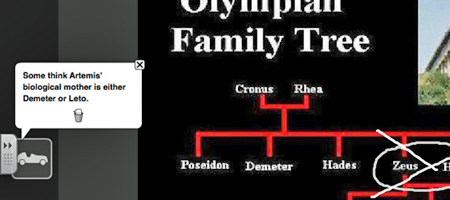With expanding understandings of literacy based in multiliteracies necessary for the 21st century, ELA teachers must support students in an increasingly wide variety of skill sets. As a middle school ELA teacher, I have felt overwhelmed when considering how to meet the real needs of students.
Giving our Students What They Deserve
According to the International Reading Association’s position statement on Adolescent Literacy (2012), adolescents deserve:
- content area teachers who provide instruction in the multiple literacy strategies needed to meet the demands of the specific discipline.
- access to and instruction with multimodal, multiple texts.
- differentiated literacy instruction specific to their individual needs.
- opportunities to participate in oral communication when they engage in literacy activities.
- access to a wide variety of print and nonprint materials.
These are a lot of needs to be met by one English Language Arts teacher. With the emphasis on multiliteracies and expert instruction we should access the support and guidance of our colleagues to truly allow students to explore literacies in the 21st century.
Providing Access to Multimodal Texts
Multimodal texts are sophisticated and require a range of expertise on the part of the teacher to fully facilitate quality reading, response and composition by students. Educators must be proactive, seek help and supports, and work to meet our students’ needs. Specifically, seeking new instructional models that support integrating the Internet, information communication technologies (ICTs) and multimodal literacies are requirements for effective classroom teaching (International Reading Assocation, 2009).
Motivated by both the needs of my students and a sense of self-preservation, I sought help from my school’s Library and Media Specialist, Katie. Over the course of one year, we collaborated on major units covered in my ELA classroom. This allowed for a depth and breadth of multimodal work that would not have been possible without co-teaching.
Collaborative Teaching
Greg Conderman (2011) provides a guide for effectively integrating co-teaching into your classroom:
- Discuss pedagogical and philosophical views on teaching to avoid conflict.
- Chart expertise in order to employ each teacher’s strengths.
- Layout specific goals to guide instruction.
- Take time for co-planning.
- Employ a range of co-teaching methods.
Katie and I were able to follow these guidelines to support students in a range of units because we created space in both of our classrooms to co-teach. I saw students for 90 minutes daily. Katie had Library Class one day a week for 45 minutes. We decided to use Katie’s Library class and an additional 45 minutes once a week in my ELA class for co-taught time. Combining our classes in this way required us to combine specific content goals.
Each of us brought different expertise to the classroom. Katie took time to be sure our units included authentic research goals and guided mini-lessons on a range of computer software, Web 2.0 tools and other ICTs. I emphasized literacy and composition skills and choose appropriate texts. Together we planned units that met these broad goals as well as more specific ones necessary to meet curricular goals and benchmarks. In co-planning we negotiated these goals and focused on integrating appropriate texts, tools, and skill sets into our classroom.
Our Sixth Grade Greek Mythology Unit
In sixth grade students at my school immerse themselves in studies of ancient Greece. In my ELA classroom we focus on mythology. Katie and I developed a unit that we hoped would give students the opportunity to:
- Develop a range of writing skills (outlining, summarizing, research, script, and narrative writing)
- Research authentically in following a research question to its natural conclusion by using online texts such as databases, websites, news sources, etc.
- Read online using online reading skills and critically evaluate online texts to determine authority, usefulness, and bias
- Compose digital and dramatic multimodal texts
In order to meet the goals we set forth in our co-taught classroom we realized we would use all of our co-taught class time and some of my ELA class time. In total the unit described below took us five weeks from start to finish.

Visual Commentary on a VoiceThread
After an introduction to Greek mythology through a PowerPoint presentation and myth reading, students chose a mythological figure that fascinated them. Then we worked in ELA class to develop research questions about that figure. Next, Katie began mini-lessons on research tools while we also worked on how to “be” researchers. As they researched students created outlines using Microsoft Word and compiled a reference list of both text and image sources. As they researched on the Internet we both conducted lessons on reading and critically evaluating online texts.
The culminating phase of the unit was the creation of a VoiceThread, a Web 2.0 presentation tool that includes images, documents, and pre-recorded written, audio and visual commentary by the presenter. Based on their individual research, we gave mini-lessons that supported students in determining and ordering appropriate images and documents, writing a script of their commentary and choosing which type of commentary was appropriate for a given slide. I then gave mini-lessons on narrative monologues while students wrote their own from the perspective of the mythological figure and designed costumes. Finally, we invited family and friends to watch our monologues and VoiceThreads at “Greek Fest.”

Written Commentary on a VoiceThread
A combination of our individual expertise and goals centered on multiliteracies made this unit as rich and sophisticated as possible. Choosing to work with Katie allowed me to meet the real needs of my students. We owe it to our students to reach out for help to meet the complicated goals of multiliteracies necessary to the world in which students live.
References
Conderman, G. (2011). Middle school co-teaching: Effective practices and student reflections. Middle School Journal, 42 (4), 24-31.
International Reading Association (2012). Adolescent literacy: A position statement of the international reading association. Retrieved from
/Libraries/resources/ps1079_adolescentliteracy_rev2012.pdf
International Reading Association (2009). New literacies and 21st century technologies. Retrieved from /Libraries/position-statements-and-resolutions/ps1067_NewLiteracies21stCentury.pdf
 Alexandra Panos is a former middle school Language Arts teacher and current doctoral student at Indiana University in the Literacy, Culture and Language Education Department.
Alexandra Panos is a former middle school Language Arts teacher and current doctoral student at Indiana University in the Literacy, Culture and Language Education Department.
This article is part of a series from the International Reading Association Technology in Literacy Education Special Interest Group (TILE-SIG).